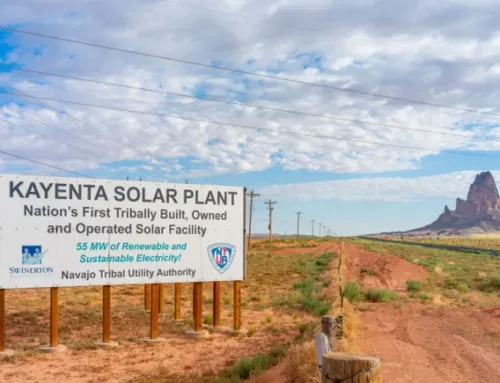Central Asia’s Renewable Energy Drive: A Strategic Pivot Towards Sustainability
June 23, 2025
Central Asia is emerging as a strategic hub for renewable energy investment, as regional governments and global investors accelerate the shift away from fossil fuels to meet international climate targets and sustain economic growth. Traditionally dependent on coal, gas, and oil, the region now faces mounting pressure to transform its energy landscape in alignment with global decarbonisation trends.
The region’s vast steppes and favourable climatic conditions position it uniquely to exploit wind energy, with a total estimated potential of nearly 370 gigawatts (OSCE, 2022). Kazakhstan, Kyrgyzstan, and Uzbekistan, in particular, are becoming focal points for wind power development, given their stable wind conditions and extensive open landscapes. The Zarafshan wind farm in Uzbekistan highlights the country’s growing commitment to harnessing wind energy. Wind power offers distinct advantages due to its relatively low environmental impact and consistent electricity production, essential for energy security and economic resilience.
However, the expansion of wind energy in Central Asia faces significant challenges. Limited infrastructure, grid integration complexities, regulatory uncertainties, and the need for significant upfront investments pose considerable obstacles. Moreover, addressing local community concerns, environmental impacts, and ensuring long-term project sustainability remain critical for successful deployment.
Solar energy offers even greater potential in the region, with combined regional estimates from expert assessments reaching up to 5,470 GW. Particularly high solar potentials are found in Kazakhstan and Uzbekistan, which collectively account for over 4,350 GW (OSCE, 2022), making them prime targets for large-scale solar developments. In 2024, Uzbekistan launched a pioneering 526 MW hybrid project by Voltalia, blending solar, wind, and battery storage, showcasing a new model for integrating renewable energy solutions (president.uz, 2024).
Hydropower also holds considerable potential in the region, amounting to approximately 1,000 TWh/year, with Tajikistan alone contributing 527 TWh/year due to its abundant water resources and mountainous terrain ideal for hydropower generation (OSCE, 2022). Major hydropower projects such as the Kambar-Ata-1 (1,860 MW) in Kyrgyzstan and the Rogun Dam (3,600 MW) in Tajikistan, both supported by the World Bank, are poised to redefine regional energy dynamics. However, hydropower comes with social and environmental risks, including downstream water disputes, which have been a source of geopolitical tension.
Over recent years, the region has significantly advanced its green energy capacities. According to IRENA, the total renewable energy in Central Asia increased by 26.6% over five years, surpassing 17.3 GW in 2023. Kazakhstan and Uzbekistan have been pivotal to this growth. Kazakhstan showed the most impressive increase during the same period – 83.4%, reaching 5.7 GW in 2023. Additionally, the country held a referendum in 2024 on nuclear power, reflecting its broader energy strategy. Uzbekistan also demonstrated significant progress, with its renewable energy capacity reaching 2.7 GW, an increase of 39% since 2018. Tajikistan’s renewable capacity rose by 15.6% over five years, reaching 5.8 GW.
Despite this progress, the challenge of transitioning from fossil fuels remains significant. Kazakhstan still relies on coal for 70% of its electricity generation, while Uzbekistan depends on gas for 83% of its power supply (IEA, 2022). To meet its ambitious target of 40% renewable energy by 2030, Uzbekistan continues to attract international investment.
International interest in Central Asia’s renewable sector is rapidly intensifying, with significant investments flowing in from major global players. China leads the pack, investing into renewables across Kazakhstan and Uzbekistan, primarily through companies such as Goldwind Science & Technology, which already operates wind facilities exceeding 500 MW. Additionally, China’s Belt and Road Initiative (BRI) has played a crucial role in funding projects like CEEC’s 1 GW Bukhara wind farm, highlightingthe interest of major international players in the development of wind energy projects in the region.
European companies are also active, with TotalEnergies exploring renewable projects in Kazakhstan. Meanwhile, the Asian Development Bank (ADB) and the European Bank for Reconstruction and Development (EBRD) have provided crucial financial backing, with EBRD committing €6.8M to the SECCA programme, underscoring the European Union’s confidence in the region’s renewable energy trajectory.
Russia has also demonstrated growing interest in renewable energy opportunities within its neighboring Central Asian region. Rosatom, traditionally recognised as a global leader in nuclear energy, has significantly diversified its energy portfolio to include renewable sources. Through its Wind Power Division, Rosatom has already developed wind energy projects in Russia, successfully operating multiple wind farms with a combined capacity of over 1 GW.
Building upon this experience, Rosatom is expanding its renewable energy portfolio into Central Asia. A number of wind energy projects are planned in Kyrgyzstan – one of them near Lake Issyk-Kul. A significant agreement with Kyrgyzstan’s Ministry of Energy in 2024 aims at exploring and implementing an investment project for the construction of renewable energy facilities with a capacity of up to 1 GW. Construction on Rosatom’s key 100 MW wind farm project near Kok-Moynok village is expected to commence in 2026. Additionally, a wind power plant project with a total installed capacity of 100 MW is currently under development in Kazakhstan.
Renewable energy holds substantial potential to drive regional economic integration and political stability. Cross-border renewable energy projects and integrated power systems could significantly enhance cooperation within Central Asia, aligning regional interests with broader global climate commitments. Furthermore, renewable energy development creates employment opportunities, with Kazakhstan actively promoting training programmes through its renewable energy auctions.
Turkmenistan, however, lags behind its neighbors, with minimal renewable energy deployment despite its high solar potential.
Technological advancements in battery storage are also playing a crucial role in overcoming grid intermittency. Projects such as Voltalia’s 200 MWh battery storage integration in Uzbekistan and Kazakhstan’s plans for large-scale wind projects with storage solutions highlight the region’s growing focus on grid stability and energy security.
Central Asia’s strategic pivot to renewables, supported by leading international corporations and financial institutions, represents a transformative step towards a sustainable, carbon-neutral future.
Search
RECENT PRESS RELEASES
Related Post


